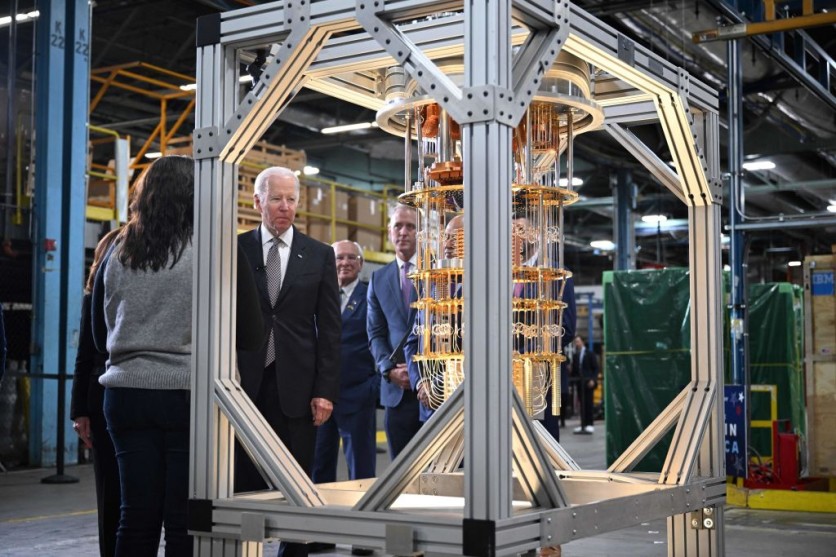This week unfurled a captivating report on science, ranging from groundbreaking quantum computing achievements to the intriguing discovery of a rare dolphin.
Check out these intriguing current topics that have piqued curious minds across the globe.
IBM's Quantum Leap
IBM has once again pushed the boundaries of quantum computing with the unveiling of its latest processor, the IBM Quantum Condor chip, featuring an impressive 1,121 qubits-the world's second-largest quantum chip to date, as reported by LiveScience. Surprisingly, the focus is shifting to a smaller counterpart in the pipeline, the IBM Quantum Heron processors, each equipped with 133 qubits. Despite its smaller size, the Heron chip is generating significant excitement due to its five times lower error rate compared to the Condor.
Quantum computing's transformative power lies in utilizing qubits, which, thanks to the principle of superposition, can exist simultaneously in multiple states. As qubit counts increase, computational states scale, substantially reducing calculation time. Overcoming the inherent challenges of qubits, such as their error-prone nature requiring near-absolute zero temperatures, remains a critical aspect of quantum computing development.
Matthias Steffen, an IBM fellow of quantum processor technologies, emphasized the innovative cooling methods designed for the Condor chip, showcasing advancements in handling a large chip size. These innovations extend to the configuration of 1-mile-long coaxial cabling, a crucial element in the upcoming Heron chip.
System Two, which operates in New York and has three IBM Heron processors, is the first to use a modular architecture that lets qubits be added one at a time. The recent development highlights an important step toward achieving quantum supremacy through better hardware, which includes a new error-correcting code.

MAVEN Observes Martian Atmosphere Balloon
Scientists have presented their findings on a recently observed rare event on Mars, where the Red Planet's atmosphere dramatically expanded due to a powerful solar wind gust, as reported by WION.
The MAVEN spacecraft captured the event on December 26, 2022, which coincided with a significant decrease in solar particles and an extraordinary tripling in the size of Mars' magnetosphere and ionosphere, which stretched thousands of kilometers. The unexpected occurrence was last witnessed on Earth in 1999, providing fresh insights into how Mars reacts to sudden shifts in solar conditions and enhancing our comprehension of planetary dynamics within the solar system.
In 12/2022, @NASAMars' MAVEN mission witnessed a remarkable event – the "disappearance" of the solar wind caused by a powerful solar event. This unique occurrence led to fascinating changes in Mars' atmosphere and magnetosphere. MAVEN continues to provide valuable insights into… pic.twitter.com/7PHVy3NOkJ
— Pamela Melroy (@Astro_Pam) December 13, 2023
Presented at the American Geophysical Union Fall Meeting 2023, the findings, as highlighted by lead author Jasper Halekas, a professor at the University of Iowa, underscore the unprecedented nature of the data and its crucial role in deciphering Mars's behavior under unusual solar circumstances. The observations uncovered a distinct solar wind type on Mars, involving a blend of two solar winds, resulting in a rare void characterized by low density and an extremely feeble solar wind. This breakthrough contributes valuable information about the intricate dynamics of planets orbiting stars with less turbulent conditions.
Dolphin with 'Thumbs' Discovered in the Gulf of Corinth
Off the coast of Greece in the Gulf of Corinth, researchers from the Pelagos Cetacean Research Institute (PCRI) stumbled upon an extraordinary marine discovery: a rare dolphin sporting what appears to be "thumbs" on its flippers. Documented on two separate occasions, Global News reported that the PCRI, a scientific non-profit specializing in marine mammal research, captured the unique flipper morphology in photos and a YouTube video.
Despite its unusual appearance, the dolphin exhibited no signs of distress and seamlessly kept pace with its pod, debunking concerns about impaired mobility. Researchers believe the anomaly stems from a genetic abnormality rather than an illness or injury. The irregularity in both flippers without associated injuries or skin lesions points to a rare genetic expression.
Lisa Noelle Cooper, an associate professor of mammalian anatomy and neurobiology at Northeast Ohio Medical University, explained that the hook-shaped structure resembling a thumb in the dolphin may contain some bone but cannot move, per LiveScience.

ⓒ 2025 TECHTIMES.com All rights reserved. Do not reproduce without permission.




